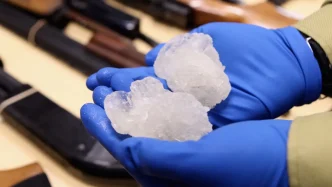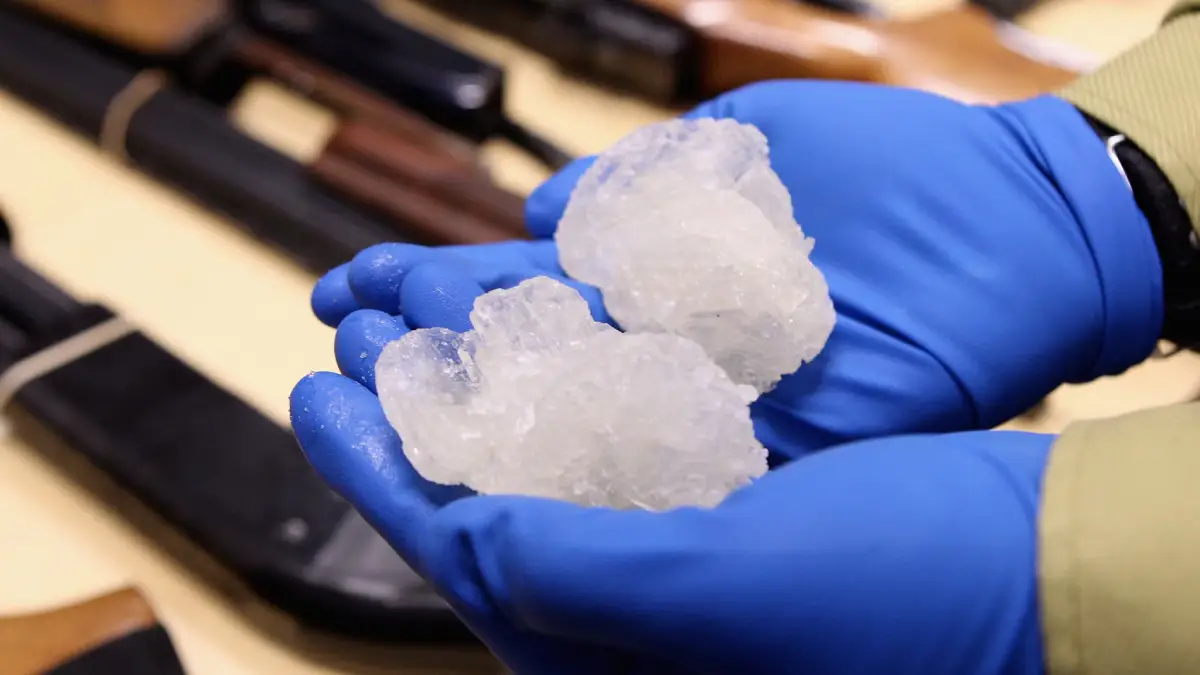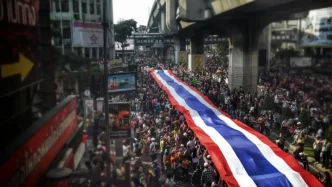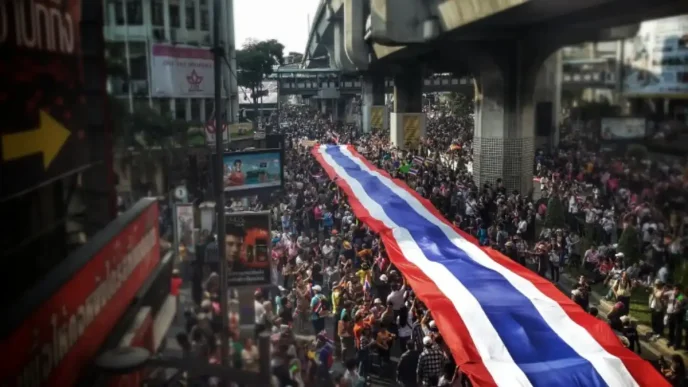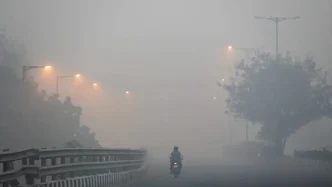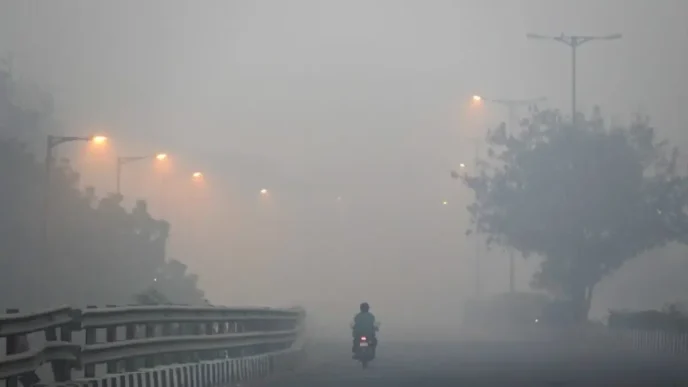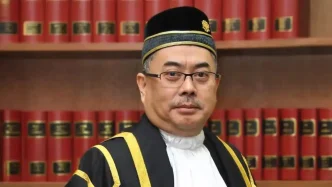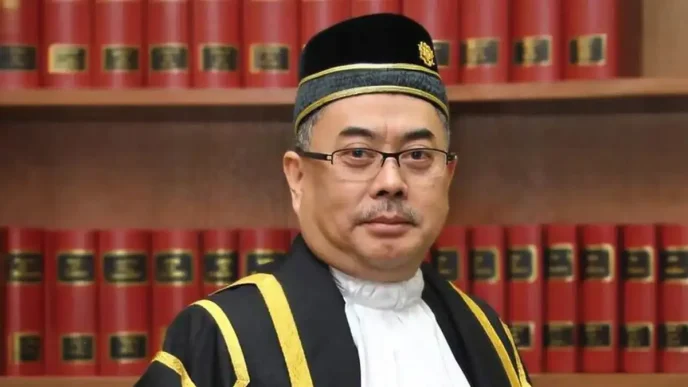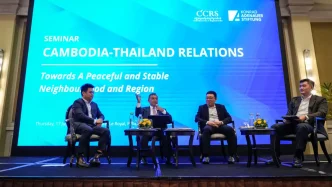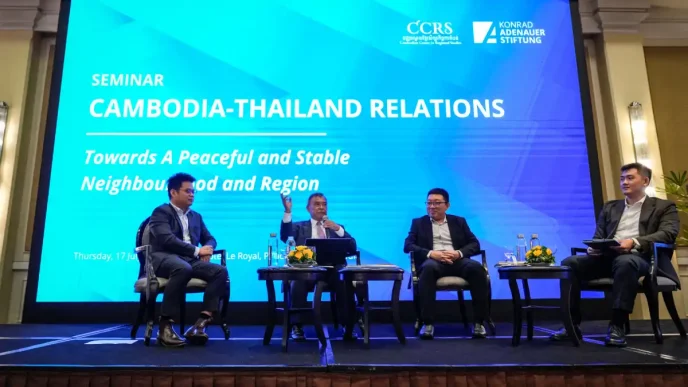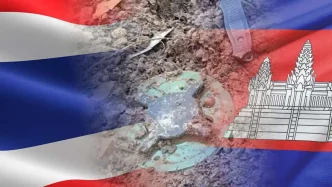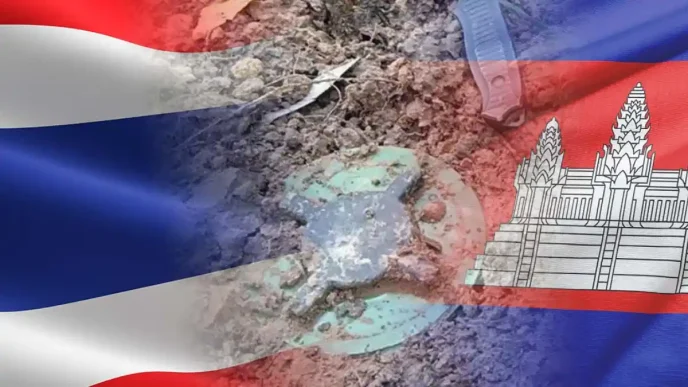Indonesia has recorded its largest drug seizure in six years, with the National Narcotics Agency (BNN) confiscating 3.41 tonnes of methamphetamine—worth an estimated US$590 million—in the first half of 2025 alone. This staggering haul, surpassing the total annual seizures of the past five years combined, underscores the growing challenge of drug trafficking across Southeast Asia, a region increasingly plagued by the production and distribution of synthetic drugs.
A Record-Breaking Raid
The most significant operation of the year occurred in mid-May, when BNN intercepted 2.1 tonnes of methamphetamine in the waters off Batam, an island near Singapore. This single seizure, the largest in the agency’s recent history, involved a trade ship named Sea Dragon Tarawa. The quantity of drugs seized could potentially supply eight million users, with each gram typically shared among four individuals. Alongside methamphetamine, authorities have also seized 2.65 tonnes of other illicit substances, including marijuana and cocaine, valued at approximately US$95 million, in 2025 so far.
BNN data reveals a sharp contrast with previous years. In 2024, the agency confiscated less than a tonne of methamphetamine for the entire year, while annual hauls between 2020 and 2023 ranged from 1.2 to 2.8 tonnes. The dramatic increase in 2025 points to a surge in both supply and trafficking sophistication, raising alarms about the region’s vulnerability to drug networks.
Unveiling Maritime Trafficking Routes
In an exclusive interview on July 3, 2025, BNN chief Commissioner-General Marthinus Hukom detailed the intricate maritime route used by traffickers in the May seizure. The drugs, primarily produced in Myanmar, were loaded onto the Sea Dragon Tarawa in the Andaman Sea. The vessel, reportedly constructed in Thailand, then navigated south through the Malacca Strait, passing the waters bordering Indonesia and Singapore. From there, it entered the South China Sea, offloading packages near Kalimantan for the Indonesian market before continuing to the Philippines and Taiwan. The ship would loop back to the Andaman Sea, repeating the journey multiple times.
“We have cut the trade chain for not only ASEAN countries, but also Taiwan. We expect the drug rings will change their route” said Commissioner-General Marthinus Hukom. He also noted that during trans-shipment, packages sometimes fall off vessels, with small boats or even local fishermen recovering them. In the past, floating drug packages have been discovered off North Kalimantan, later distributed to regions like Java and Sulawesi.
According to BNN’s analysis, drugs often enter Malaysia via Sarawak’s capital, Kuching, and the Philippines through Tawi-Tawi and Mindanao islands. Singapore, however, was not a delivery point for this particular vessel, based on data collected from the ship’s Automatic Identification System satellites.
Regional Drug Crisis Fueled by Myanmar
The surge in methamphetamine seizures is not unique to Indonesia. A recent report by the United Nations Office on Drugs and Crime (UNODC) highlighted that seizures across Southeast Asia reached a record 236 tonnes in 2024, a 24 percent increase from the previous year. Myanmar, embroiled in conflict since 2021, has emerged as a major hub for large-scale methamphetamine production, driving up supply across the region.
Methamphetamine, a potent synthetic stimulant, poses severe health risks, including damage to the heart, teeth, and brain, as well as psychological effects like paranoia and memory loss. In Indonesia, it is commonly used by laborers, plantation workers, drivers, and nightlife employees, while marijuana remains popular among youth and students. Another synthetic drug, Ecstasy, is frequently consumed in nightclubs, according to BNN findings.
The retail price of methamphetamine in Indonesia averaged US$135 per gram in 2024, significantly higher than in Myanmar, where it costs just US$6 per gram. Prices rise with distance from production hubs, reaching US$79 per gram in the Philippines and US$68 in Hong Kong, as reported by UNODC on June 26, 2025.
Rising Arrests and Persistent Demand
Despite a slight decline in drug prevalence, Indonesia still grapples with a significant user base. Government data indicates that the number of drug users aged 15 to 64 dropped to 3.33 million in 2023 from 3.66 million in 2021. However, police cases involving drug offenders have risen, with 53,672 arrests recorded in the first 11 months of 2024, compared to 50,291 in 2023 and 44,983 in 2022.
Criminologist Yogo Tri Hendiarto from the University of Indonesia suggests that the large quantities seized in 2025 reflect sustained demand both domestically and regionally. “Demand dictates supply. The large quantity of drugs confiscated this year suggests that demand remains strong in Indonesia and elsewhere, while the country’s low prevalence rate indicates that prevention and rehabilitation efforts have been effective” he explained. However, he cautioned that the reported decline in users might stem from flaws in survey methodologies.
Challenges in Rehabilitation and Awareness
Beyond enforcement, addressing drug addiction remains a complex issue. Many users are unaware of government-provided rehabilitation services, which are free of charge. Anti-drug activist Denny Bintang, who runs a 6,400-member Facebook group advocating for rehabilitation, pointed out a critical barrier on July 3, 2025: “Many are also afraid to come forward and use the service, thinking they will be arrested.” He emphasized that Indonesian law recognizes some users as victims rather than criminals, but public awareness of this distinction remains low. Additionally, privately run rehabilitation centers are often prohibitively expensive for many addicts and their families.
Personal stories of recovery offer a glimmer of hope. Maturidi Putra, a 51-year-old entrepreneur who has been drug-free for a decade without formal rehabilitation, shared his perspective in an interview on July 3, 2025: “The cure is as simple as returning to the life we had before we became addicted. Avoid the people and environment that led us there in the first place.” His journey reflects the possibility of recovery through personal resolve, though systemic support remains crucial for broader impact.
Targeting Vulnerable Communities
The May raid on the Sea Dragon Tarawa, which resulted in the arrest of a six-member crew—four Indonesians and two Thais—was the culmination of a five-month intelligence operation. The drugs, packaged in 67 cardboard boxes disguised as green tea, contained 2,000 smaller packets totaling 2.1 tonnes. Commissioner-General Marthinus Hukom revealed on July 3, 2025, that drug networks, much like terror organizations, often recruit from economically disadvantaged communities. “In the drug operations, they are the sales agents, couriers… We map out the regions in Indonesia that are prone to be recruitment centers. We do our work from there” he said.
This strategy of targeting vulnerable populations mirrors patterns seen in other criminal networks, exploiting economic hardship to sustain operations. BNN’s focus on identifying and disrupting these recruitment hubs is a critical component of their broader efforts to dismantle trafficking chains.
A Regional and Global Challenge
Indonesia’s record-breaking seizures are a stark reminder of the transnational nature of drug trafficking. The maritime routes spanning Myanmar, Thailand, Malaysia, the Philippines, and Taiwan illustrate the complexity of combating this crisis, which requires coordinated international efforts. While BNN’s operations have disrupted a major supply chain, the adaptability of drug rings—likely to shift routes in response—poses an ongoing challenge.
The social and health impacts of methamphetamine and other drugs continue to burden communities across Southeast Asia. In Indonesia, balancing enforcement with rehabilitation and prevention remains a delicate task, particularly as stigma and lack of awareness hinder access to support services. As the region grapples with record hauls and persistent demand, the effectiveness of current strategies and the potential for deeper international collaboration remain open questions.
With drug trafficking networks evolving, the fight against this scourge in Southeast Asia is far from over. Indonesia’s recent successes mark a significant step, but the road ahead demands sustained vigilance and innovative approaches to address both supply and demand.

